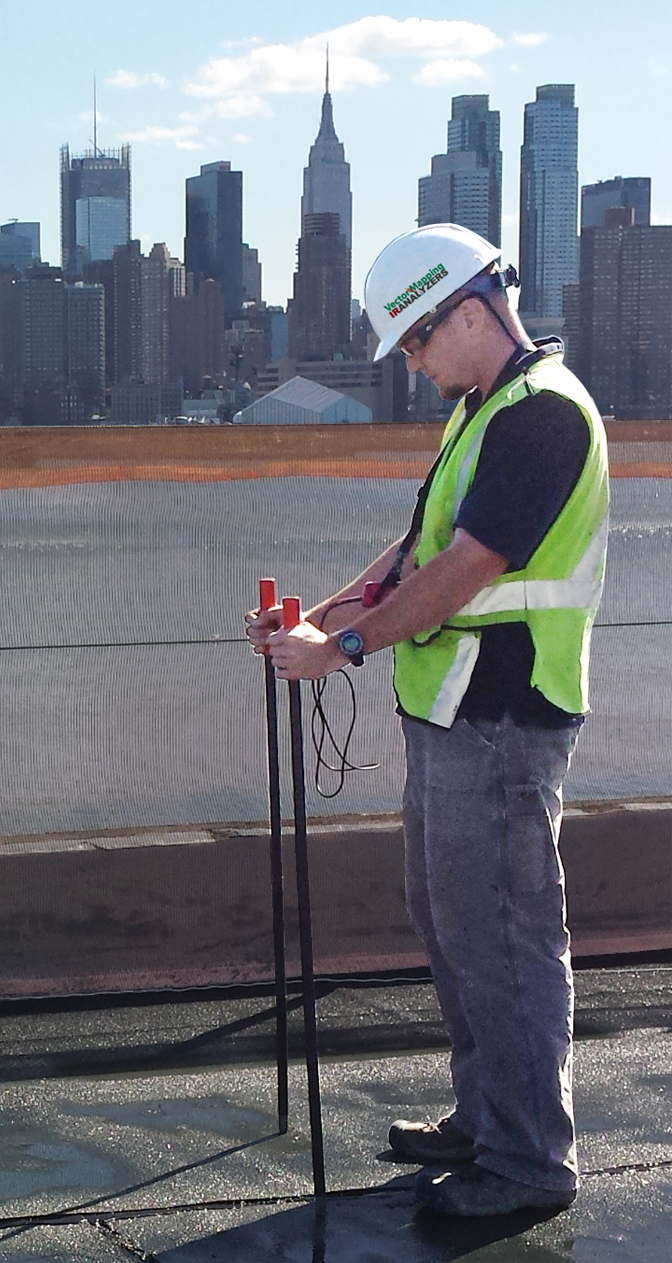ELD Successes and Failures: Lessons From The Field
Learning Objectives:
- Describe how high and low voltage electronic leak detection work and select the best technique for different roofing and waterproofing assemblies.
- Evaluate the importance of securing a proper ground during testing and recognize conditions that can present challenges to effective grounding.
- Anticipate the challenges and limitations of conducting low voltage vector mapping through commonly employed overburden material.
- Manage customer expectations about what can and cannot be accomplished during different stages of assembly and during the roof’s service life.
Credits:

Technician performing low-voltage vector mapping
In this webinar we will explain how high and low voltage electronic leak detection techniques work, and discuss how to select the best technique for different roofing and waterproofing assemblies. Attendees will learn about challenges involved in assuring that a proper ground is available in the system to be tested, including the limitations of conducting low voltage testing through various types and depths of overburden material. With these concerns in mind, we will discuss the importance of managing the expectations of customers and stakeholders regarding the ability to accurately test during system assembly and the assembly’s service life.
 Peter Brooks has made numerous technical presentations for national conventions, industry training seminars and specialty trade groups, and formerly served as RCI Region I Director.
Peter Brooks has made numerous technical presentations for national conventions, industry training seminars and specialty trade groups, and formerly served as RCI Region I Director.

|
|








